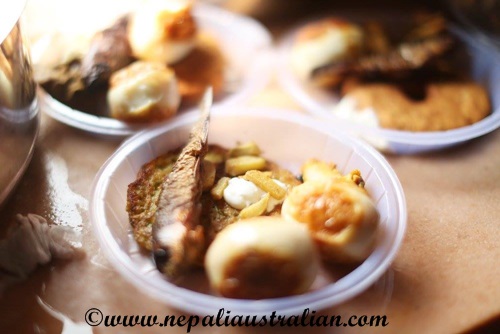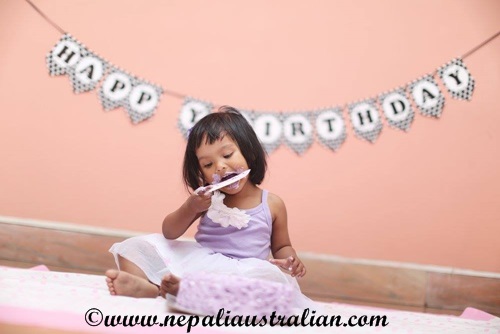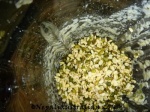One of the main reasons for our visit to Nepal this time was to celebrate Chhori 2nd birthday in Nepal with friends and family.
In Newari culture, for reasons unknown and out of tradition handed down from generation to generation, the first birthday of a child is not celebrated. When a child is born, we have chhaiti, nwaran then pasni. After pasni, the big celebration is second birthday, which is known as Nirbuni.
Time goes by so quickly and our little munchkin turned a BIG 2 on 20 Feb.
As we were in Nepal for the celebration, we followed Newari culture to perform her birthday puja.
In Newari culture, we make Yomari every even birthday 2, 4, 6, 8, and 12. Yomari is a delicacy of the Newars. It consists of an external covering of rice-flour and an inner content of sweet substances such as chaku (Molasses). Click here for the recipe.
We had planned things in advance for this and were happy that things came together as planned on the big day.
On her birthday, in the morning, MIL prepared for birthday puja with sagun (traditional plate typically consisting of a boiled egg, smoked fish, a “bara”, haku chhoila” and “aila” and “dhau”) .
We had other relatives who were invited for the occasion including my parents, uncles and aunts.
The puja started with tika and yomari mala (garland) from my MIL followed by ritual to pour bits of rice, radish, coins, and cucumber in a small container from her head. This is believed to drive any evil spirit.
Then it was followed by Sagun and gifts to her.She was really spoiled with gifts like dresses and jewelleries.
My parents had come with my relatives to celebrate Chhori’s birthday with lots of food which included rotis, fruits, sagun and gifts.
After my MIL my mum and aunt did similar puja. Tika and sagun was followed by gifts to Chhori, me, AS and to my in laws.
Chhori loved the whole process except when the yomari garland was put around her neck as the string annoyed her and she wanted to take it out. She was happy with so many people around us that day for the whole day. We really had a great time with all the relatives.
After all the puja was finished, we had cake smash for her too. What a difference a year can make. When we had done the cake smash on Chhori’s first birthday, she was happy to be messy and smashed the cake well, which gave us some amazing photos but this year she definitely has become a big girl.
At first she just used her finger to taste the cake and then asked for a knife to cut the cake when asked to smash it. Nevertheless we had a great time and she had a lot of fun sharing a piece with everyone.
The day was long but fun and exciting.
We had her birthday party on another day so I will write more about it in my next post.
Till then, take care everyone and happy Monday.
M from nepaliaustralian
XOXO






































































